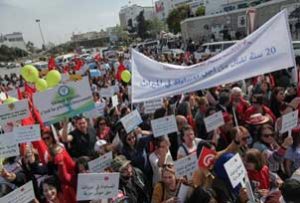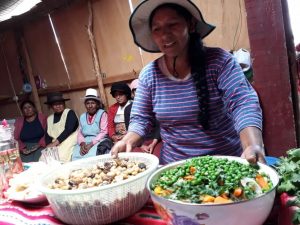GIC leads funding round of $129 million with Warburg Pincus, Dawn Capital and other existing investors participating
Quantexa joins elite group of UK tech companies reaching breakout Unicorn status
LONDON and NEW YORK, April 04, 2023 (GLOBE NEWSWIRE) — Quantexa, a global leader in Decision Intelligence (DI) solutions for the public and private sectors, announced today that it has completed a $129 million Series E funding round. The latest investment round secures the British tech company's unicorn status with a valuation of $1.8 billion and will accelerate the execution of its growth strategy within the *$230bn Decision Intelligence category.
The round was led by GIC, a global institutional investor, and existing investors also participated, including Warburg Pincus, Dawn Capital, British Patient Capital, Evolution Equity Partners, HSBC, BNY Mellon, ABN AMRO Ventures, and AlbionVC. This investment comes less than 18 months after Quantexa closed its $157 million Series D funding round in July 2021 and just weeks after its acquisition of Aylien, a Dublin–based leader in natural language processing (NLP) and advanced AI.
In what has been a difficult period for many tech companies, Quantexa continues to post impressive growth, having grown their ARR over 100% since closing their Series D round. In the same time period, Quantexa has seen robust growth in all regions, including a breakout performance in North America, with an increase in ARR of over 180%.
The success comes on the heels of Quantexa's continued geographic expansion efforts which has seen the company grow from 500 to 650 employees over the past year and open new offices in New York City, the UAE, Amsterdam, and a new Technology and Analytics Hub in Malaga Tech Park, Spain, in November 2022. This new capital will ensure that Quantexa continues to grow its global presence and invest in its world–class engineering talent.
Quantexa also plans to use the funding to boost technology innovation efforts and strengthen its Decision Intelligence Platform capabilities in low–code data fusion, graph analytics, machine learning (ML), natural language processing (NLP) and artificial intelligence (AI). Additionally, Quantexa will increase focus on accelerating joint go–to–market efforts with its flagship partners which include Google, Moody's, Accenture, KPMG, Deloitte, and EY.
Deployed in more than 70 countries, thousands of users across banking, insurance, telecoms industries, and within public sector, rely on Quantexa's outcome–driven solutions to protect, optimize, and grow their organizations. Quantexa's growing customer–base includes BNY Mellon, HSBC, Standard Chartered, Danske Bank, Vodafone, and The Public Sector Fraud Authority in the UK Cabinet Office.
Vishal Marria, CEO of Quantexa said, "After closing our Series D investment round, Quantexa has been on a transformational journey, accelerating the growth of our global software business and firmly establishing our leadership position in the emerging Decision Intelligence category. In a challenging market we have doubled our ARR, our user base, and continue to penetrate new markets and industries. This infusion of capital will fuel further innovation, diversification, and expansion, and opens exciting options for our future.
"It's a real testament to our vision and trajectory to have such a significant contribution from our new investor, GIC and the majority of our Series D investors "" in our latest round. We warmly welcome GIC and thank our existing investors for their continued confidence in our ability to generate growth and accelerate the path to profitability."
*Total addressable market (TAM) estimate is based on Quantexa proprietary research with data from sources including IDC, Chartis, GreySpark (GS), Allied Market Research, and Inkwood Research.
About Quantexa"
Quantexa is a global data and analytics software company pioneering Decision Intelligence that empowers organizations to make trusted operational decisions by making data meaningful. Using the latest advancements in big data and AI, Quantexa's Decision Intelligence platform uncovers hidden risk and new opportunities by providing a contextual, connected view of internal and external data in a single place. It solves major challenges across data management, KYC, customer intelligence, financial crime, risk, fraud, and security, throughout the customer lifecycle.
The Quantexa Decision Intelligence Platform enhances operational performance with over 90% more accuracy and 60 times faster analytical model resolution than traditional approaches. Founded in 2016, Quantexa now has more than 600 employees and thousands of users working with billions of transactions and data points across the world. The company has offices in London, New York, Boston, Toronto, Malaga, Brussels, Amsterdam, Luxemburg, Singapore, Melbourne, Sydney, and the UAE. For more information, please visit www.quantexa.com or follow us on LinkedIn.
About GIC
GIC is a leading global investment firm established in 1981 to secure Singapore's financial future. As the manager of Singapore's foreign reserves, GIC takes a long–term, disciplined approach to investing and is uniquely positioned across a wide range of asset classes and active strategies globally. These include equities, fixed income, real estate, private equity, venture capital and infrastructure. Its long–term approach, multi–asset capabilities and global connectivity enable it to be an investor of choice. GIC seeks to add meaningful value to its investments. Headquartered in Singapore, GIC has a global talent force of over 1,900 people in 11 key financial cities and has investments in over 40 countries. For more information, please visit www.gic.com.sg or follow on LinkedIn.
Media Enquiries"
C: Stephanie Crisp, Associate Director and Media Strategist, Fight or Flight""
E: [email protected]""
"
C: Adam Jaffe, SVP of Corporate Marketing""
T: +1 609 502 6889""
E: [email protected]""
– or –""
[email protected]

GLOBENEWSWIRE (Distribution ID 1000802066)



 Ambassador Anwarul K. Chowdhury, a former Permanent Representative of Bangladesh to the UN and a former UN Under-Secretary-General, told IPS the defining of a developing country is a complex challenge.
Ambassador Anwarul K. Chowdhury, a former Permanent Representative of Bangladesh to the UN and a former UN Under-Secretary-General, told IPS the defining of a developing country is a complex challenge. 


